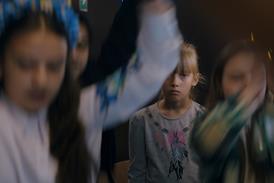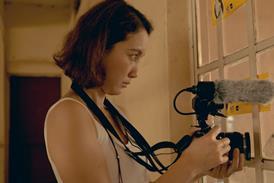3D supervisor Clyde DeSouza explained how 3D and motion capture technology - normally the preserve of Hollywood blockbusters - is becoming accessible to low-budget and indie filmmakers, during his 3D Master Class at the Abu Dhabi Film Festival.
DeSouza demonstrated what he described as the “humble” Microsoft Kinect - a motion sensing input device, normally used by gamers who own the Xbox console.
Along with software such as NuiCapture, which digitally captures the movement of skeletons, and FaceShift, which does the same for facial expressions, DeSouza explained how consumer hardware can be used to make low-budget CGI films.
“This is a home device that costs 700 dirhams (US$200), along with my three-year-old laptop; this data can be saved and applied to digital characters…Now it’s in your hands to experiment. These days you can do cloud rendering at small cost while you sleep.”
DeSouza also urged the region’s filmmakers to use CGI to create showreels and teasers for the films they want to make: “Create your film in CGI, put it out there and let people play it and engage with it - it should make it easier to find funding for the actual film.”
He also demonstrated how low-cost CGI can be used for pre-visualisation - providing indie filmmakers with the same tricks as Hollywood to visualise complex scenes before they shoot.
A big believer that the worlds of filmmaking and the games industry are merging, DeSouza also showed how games developers are incorporating emotions and morality into characters and storylines, to produce increasingly sophisticated games. As an example he screened clips from Quantic Dream’s Heavy Rain - an interactive video game that plays like a psychological thriller.
”Heavy Rain shows that you can get emotions in there - at the very least you could produce something in CGI to help getfunding for the real thing. Multi-threaded stories could end up as a cinema-quality game.”
DeSouza also talked about “The Uncanny Valley”, a term used by filmmakers to describe how audiences find it creepy when digital characters start to look too human, and argued that 3D enables the audience to have a more emotional response as it provides a simulation of a real world: “3D is not just a tool - it’s a new medium to engineer emotion.”
Following a lively and brain-twisting two-hour presentation, DeSouza concluded that only three Hollywood filmmakers really “get” 3D: James Cameron, Martin Scorsese and Ridley Scott. However he wasn’t a fan of converting films to 3D in post-production: “Titanic 3D cost $18m [to convert] - it’s usually cheaper to shoot in stereoscopic 3D and fix the errors afterwards.”

























No comments yet